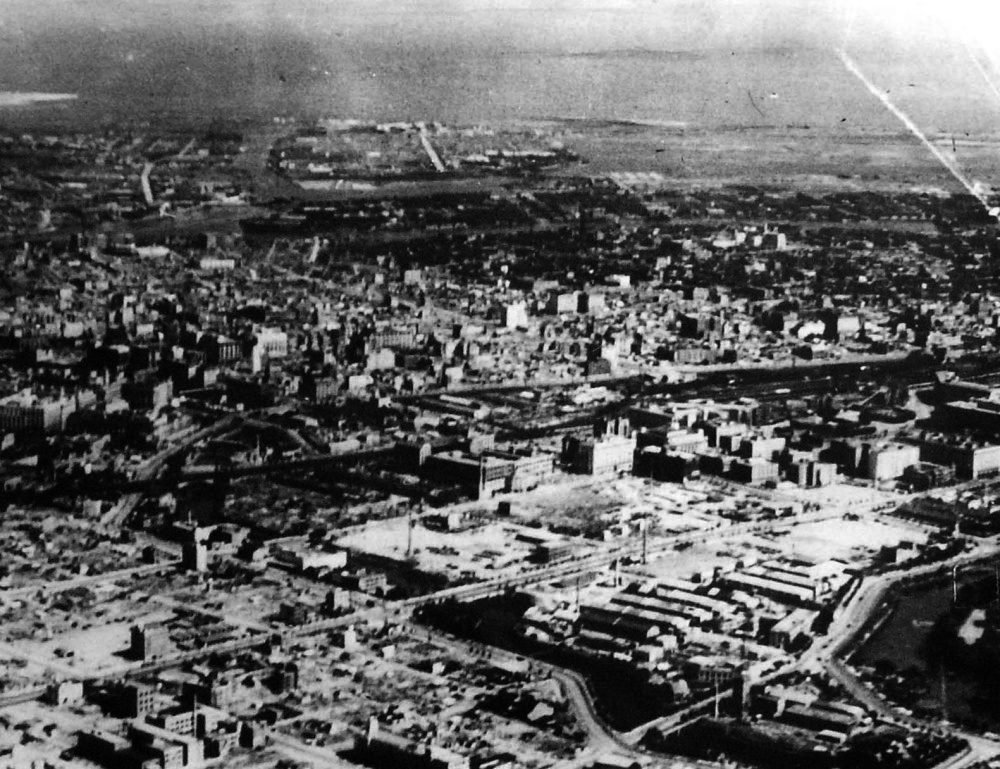This article was originally published in July 2022.
Review: Paper City, directed by Adrian Francis
In his first feature-length documentary, Adelaide-born director Adrian Francis offers a rigorous understanding of the American firebombing of Tokyo via survivors’ perspectives.
In a brutal attack nearing the end of the Second World War, on March 9 and 10, 1945, around 100,000 Japanese civilians were killed.
Many burned to death; others threw themselves into the nearby River Sumida, preferring death by drowning. Others took flight into bomb shelters where they were asphyxiated en masse.
The American Air Force’s chilling rubric for their unspeakable act was ‘Operation Meetinghouse’.
In Paper City’s account, the aftermath is principally conveyed by in-depth interviews with three Japanese survivors. At the time of the attack, Tsukiyama-san was 16, Kiyooka-san was 21 and Hoshino-san was just 14.
These testimonies are joined by one-off interviews with fellow octogenarians and nonagenarians who also experienced the firebombing.
Their memories collectively inform the bleak unfolding narrative, attesting to ruthless acts of terror.
We must remember
Solidly researched and confronting, Paper City was seven years in the making.
The film opens with archival footage of US fighter jets Tokyo-bound, transporting incendiary bombs, underscored by Don Baker’s 1942 song There’ll be a Little Smokio in Tokio.
Baker’s jauntily vocalised racist lyrics underpin the brutal dehumanisation of Japanese civilians through horrific footage.
The wholesale civilian massacre of innocents acts as a meditation on the passage of time, on collective memory and probable permanent loss. American cruelty is also at the forefront, not by demonising perpetrators, but because there isn’t any other credible interpretation.
Paper City’s pressing proposition is the imperative humankind must remember so such events aren’t repeated.
The Japanese interviewees don’t apportion blame. Some acknowledge the Imperial Japanese Army and Navy had also acted contra to how they should have.
Paper City is interspersed with deliberate, measured Japanese calligraphy, punctuating viewers’ mounting tension. These interventions mark a change of pace. The focus turns to classical Japanese aesthetics, craftsmanship and skill, evoking longstanding Japanese values.
Calligraphic artistry relies on artists’ mastery of breath control, lest there be mishaps. Paper – an important leitmotif in Paper City – attests to the beauty of the classical Japanese written word, but equally to fragility and impermanence.
In wartime Japan and for eons earlier, interior paper walls were used in mostly wooden dwellings. These building materials contributed to Tokyo’s violent conflagration, triggering the massive death toll; mass suffocation ushered in permanent cessation of breath.
Honouring the dead
Tsukiyama-san, Kiyooka-san and Hoshino-san advocate for lasting peace. The firebombing wasn’t an act of war between military groups, but a strike on an unarmed, peaceful demographic.
In one sequence, Kiyooka-san returns to her childhood neighbourhood, giving a public talk focusing on the experience of herself and her family. The audience of parents and children pay close attention.
Kiyooka-san explains she entered the river, spending the night tipping water over her head to avoid her hair burning. In the morning light, thousands of charred bodies were revealed. Kiyooka-san came across her own mother, who’d regained consciousness and was barely clinging to life.
Hoshino-san also addresses a sizeable audience in his neighbourhood. Expressing fears that today’s Japanese memory of this harrowing attack is virtually non-existent, he’s driven by a sense of responsibility to honour those who died.
Hos hino-san observes there has never been any governmental effort to collect the names of the dead and honour the civilians who died as a result of this attack.
But under Tsukiyama-san’s leadership, his Morishita 5 District remains a miraculous exception. Tsukiyama-san’s vision and work ethic prompted resident citizens to create a near comprehensive list of those who perished in the firebombing.
An extensive scroll is now permanently displayed in the Morishita Neighbourhood Centre, commemorating local residents who were killed. Underpinned by citizen power, local memorial services have now been held.
Regrettably, despite these elderly activists heroically fighting the good fight for remembrance, this unspeakable attack remains unmemorialised by generations of Japanese governmental leaders.
Regardless of the interviewees’ long term, uplifting dedication to Japanese national memory, Paper City is disturbing.
Then again, apropos of this, it is difficult to imagine a better film could have been made on this subject.
Paper City is available to stream through the Melbourne Documentary Film Festival until July 31.
This article is republished from The Conversation under a Creative Commons license. Read the original article.








